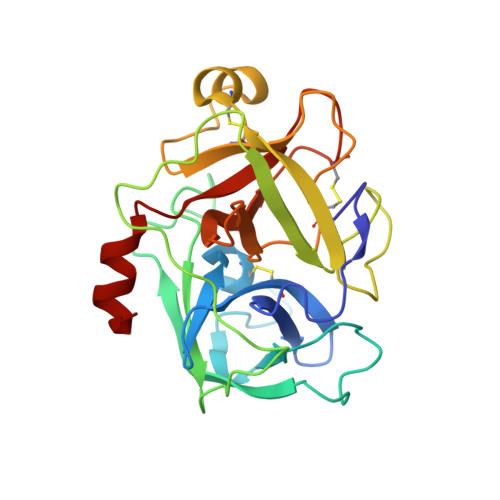Peptide length and leaving-group sterics influence potency of Peptide phosphonate protease inhibitors.
Brown, C.M., Ray, M., Eroy-Reveles, A.A., Egea, P., Tajon, C., Craik, C.S.(2011) Chem Biol 18: 48-57
- PubMed: 21276938
- DOI: https://doi.org/10.1016/j.chembiol.2010.11.007
- Primary Citation of Related Structures:
3NCL - PubMed Abstract:
The ability to follow enzyme activity in a cellular context represents a challenging technological frontier that impacts fields ranging from disease pathogenesis to epigenetics. Activity-based probes (ABPs) label the active form of an enzyme via covalent modification of catalytic residues. Here we present an analysis of parameters influencing potency of peptide phosphonate ABPs for trypsin-fold S1A proteases, an abundant and important class of enzymes with similar substrate specificities. We find that peptide length and stability influence potency more than sequence composition and present structural evidence that steric interactions at the prime-side of the substrate-binding cleft affect potency in a protease-dependent manner. We introduce guidelines for the design of peptide phosphonate ABPs and demonstrate their utility in a live-cell labeling application that specifically targets active S1A proteases at the cell surface of cancer cells.
Organizational Affiliation:
Graduate Group in Biochemistry and Molecular Biology, University of California, San Francisco, CA 94158, USA.
















